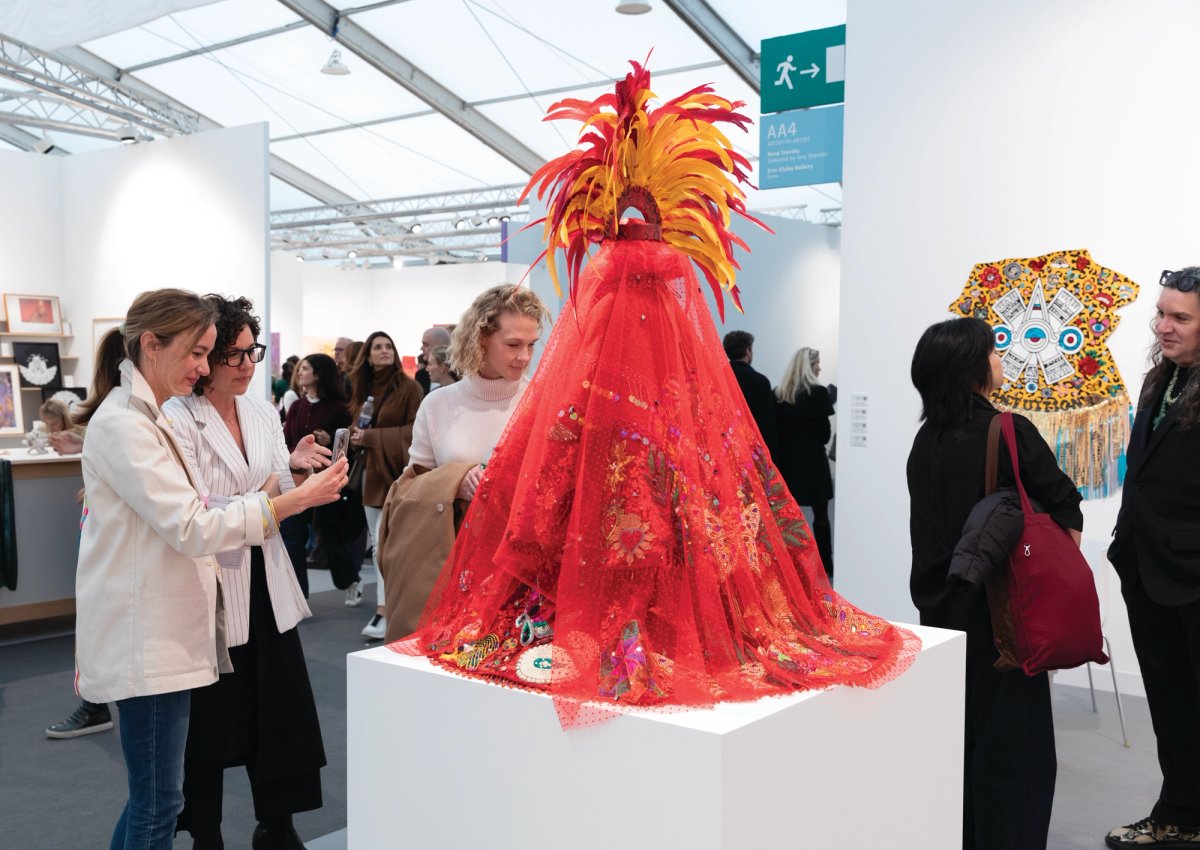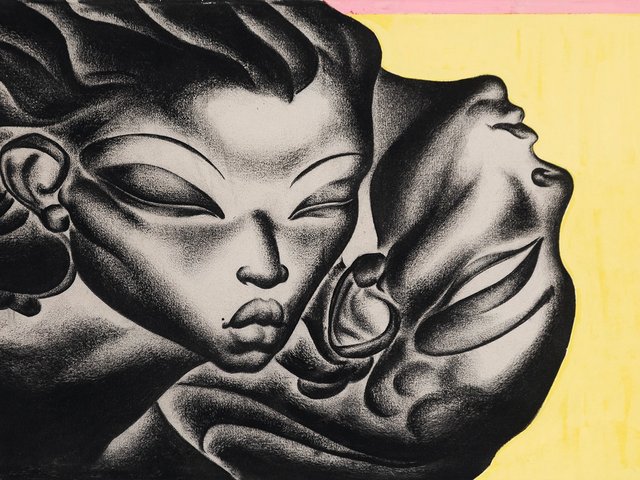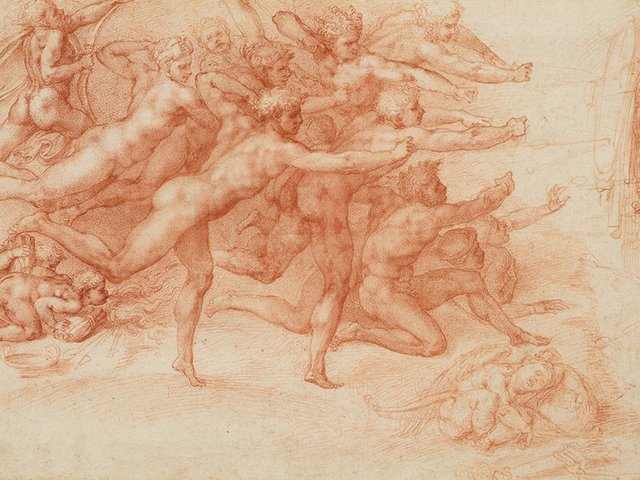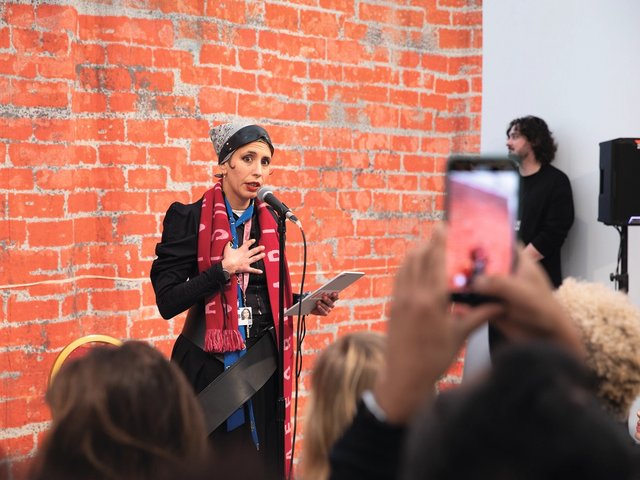The painter Amy Sherald made headlines over the summer when she cancelled the final leg of her touring exhibition at the National Portrait Gallery in Washington, DC, citing “a culture of censorship” targeting “vulnerable communities”. At Frieze London this year, she has made room for an artist whose work gains resonance from and pushes back against this same fraught climate.
The Mexican American artist René Treviño has been selected by Sherald to take part in Frieze’s Artist-to-Artist section, where leading names pick an emerging artist for a solo presentation. Front and centre in the booth is Regalia, Moscas Brillantes (Rojo) (2025), a sculpture of a figure elaborately gowned in red feathers, appliqué, lace and rhinestones. It is a work that speaks, in part, to “the history of queer resistance in art”, says the gallerist Erin Cluley.
Treviño adds that he was also thinking about the histories of colonialism when making the piece, which fuses Aztec and European aesthetics. “I am kind of proposing an alternative future or past where instead of it being war and pillaging and rape, [the meeting of societies] could become: ‘I know this thing, you know this thing, let’s bring our ideas together and we’ll move forward from here’,” he says.
That sense of unity, potent at a time when political leaders in the US and beyond are placing focus on people’s differences, carries through to other pieces too. On one wall is a series of circular paintings that show how this shape has been used across different cultures: from the Mayan calendar to Turkish tileworks and ancient Greek shields. Elsewhere, two separate paintings depict Hercules carrying a sphere on his back. One features the Aztec calendar, representing “the weight, I think, of being Latino, the weight of having that sort of Indigenous heritage”, Treviño says. The other, drawing from a form by Leonardo da Vinci, nods to “the weight of being an artist”. “Just think about the weight that we all carry,” Treviño continues. “Right now especially.”
Across the walkway, the New York-based artist Ilana Harris-Babou, nominated by Camille Henrot, presents a film work and mosaics that respond to ideas around cities—London, New York and Dakar—particularly as “spaces where we exist collectively”, says Rebecca Heidenberg of Dreamsong gallery. “Thinking about solidarity and community is so important, especially right now,” the gallerist continues.
Other booths in the Artist-to-Artist section include a moving collection of photographs by the Philadelphia-born artist Katherine Hubbard, focused on her connection to her mother, who has developed dementia. She was nominated by Nicole Eisenman (Company Gallery).
Bharti Kher, meanwhile, has picked the Indian artist T. Venkanna (Gallery Maskara), who presents a collection of delicate works involving rice paper and egg tempera, addressing themes such as gender, sexuality and the patriarchy, while Abraham Cruzvillegas (kurimanzutto) has selected the Mexican artist Ana Segovia, whose brightly coloured paintings subvert the archetype of the masculine cowboy from Mexican cinema. Chris Ofili, meanwhile, put forward the British artist Neal Tait, whom he studied with at art school in London in the 1990s.






